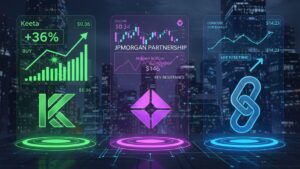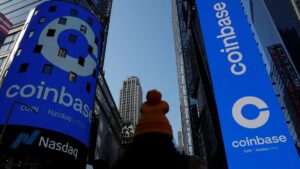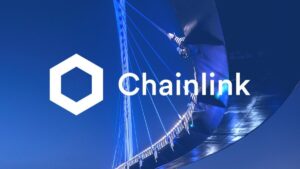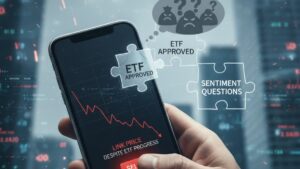TL;DR
- Chainlink’s co-founder states DeFi is 30% adopted, targeting full adoption by 2030.
- Regulatory clarity and institutional activity are key drivers for global DeFi adoption.
- DeFi lending TVL surged 72% in 2025, led by Aave with tokenized real-world assets.
Sergey Nazarov, co-founder of Chainlink, reported on November 25 that decentralized finance reaches 30% of its path toward global acceptance and could complete adoption by 2030 under adequate regulatory clarity. He explained that transparent laws, institutional activity, and U.S. policy leadership guide the current expansion of blockchain-based financial services.
Nazarov confirmed that institutional activity in Web3 increases steadily. Major financial firms use blockchain networks due to a more mature sector, and adoption accelerates during each market cycle. He argued that on-chain markets and on-chain applications present practical features for users who want reliable financial services without intermediaries.
• Institutional adoption accelerating with greater regulatory clarity
• Why highly reliable infra matters more than ever
• CRE unlocking the next phase of tokenization@SergeyNazarov discusses these trends and much more on @CryptoMichNL’s New Era Finance Podcast ↓ https://t.co/QuCeklyV4O— Chainlink (@chainlink) November 25, 2025
Michael Egorov, creator of Curve Finance, offered a comparable view. He pointed to legal uncertainty, along with KYC and AML duties, as primary obstacles slowing wider DeFi usage.
Institutional Influence in Web3
Nazarov explained during an interview that a large portion of SmartCon sessions now concentrate on institutional goals. He observed that major firms allocate resources toward tokenized assets, stablecoins, and on-chain liquidity pools. He also indicated that broad acceptance reaches around 70% once institutional clients gain an efficient path to deploy capital in DeFi markets. Broader acceptance depends on a capital base capable of matching volumes handled by large banking entities.
Nazarov added that regulatory clarity tends to flow from U.S. agencies to other regions. Many governments align with U.S. standards to remain compatible with dollar-based finance.
Growth of DeFi Lending
A report from Binance recorded a 72% expansion in DeFi lending procedures from $53 billion at the start of 2025 to more than $127 billion in cumulative TVL. DeFi lending protocols operate as automated systems that allow borrowing and lending through smart contracts, removing financial brokers and direct intermediaries.
Aave Labs’ Horizon leads the sector with around 54% of the TVL, or nearly $68 billion. Horizon enables clients to post tokenized real-world assets as collateral to access stablecoins. The report also included data from RWA.xyz, which shows $18.7 billion in tokenized private credit and $9.1 billion in tokenized U.S. Treasurys circulating on-chain.
Platforms such as Maple and Euler recorded rapid expansion and now approach $3 billion in aggregate value. Larger adoption of tokenized assets and stablecoins positions lending protocols to capture ongoing institutional activity.
Token Buybacks Signal Revenue Growth
In August, DeFi platforms executed token buybacks worth $166 million. Hyperliquid and Pump.fun led the movement due to record income. Pump.fun spent over $58 million to repurchase its token, shrinking its circulating supply by more than 4%.









